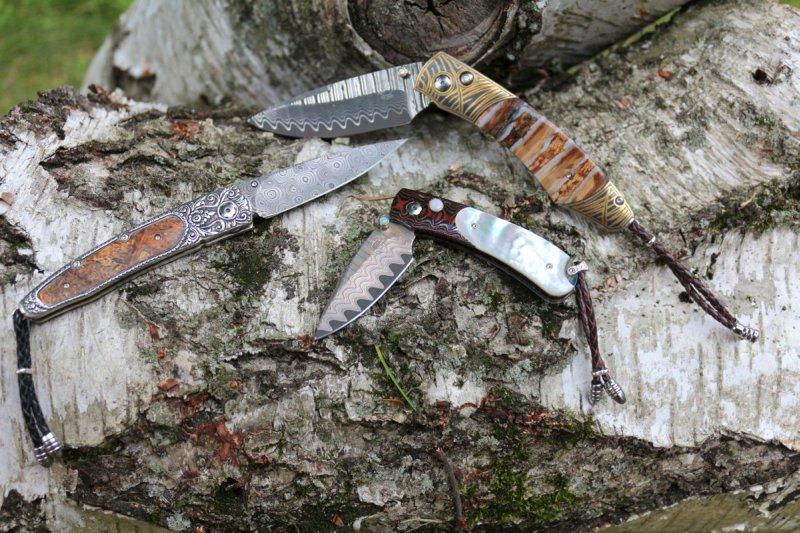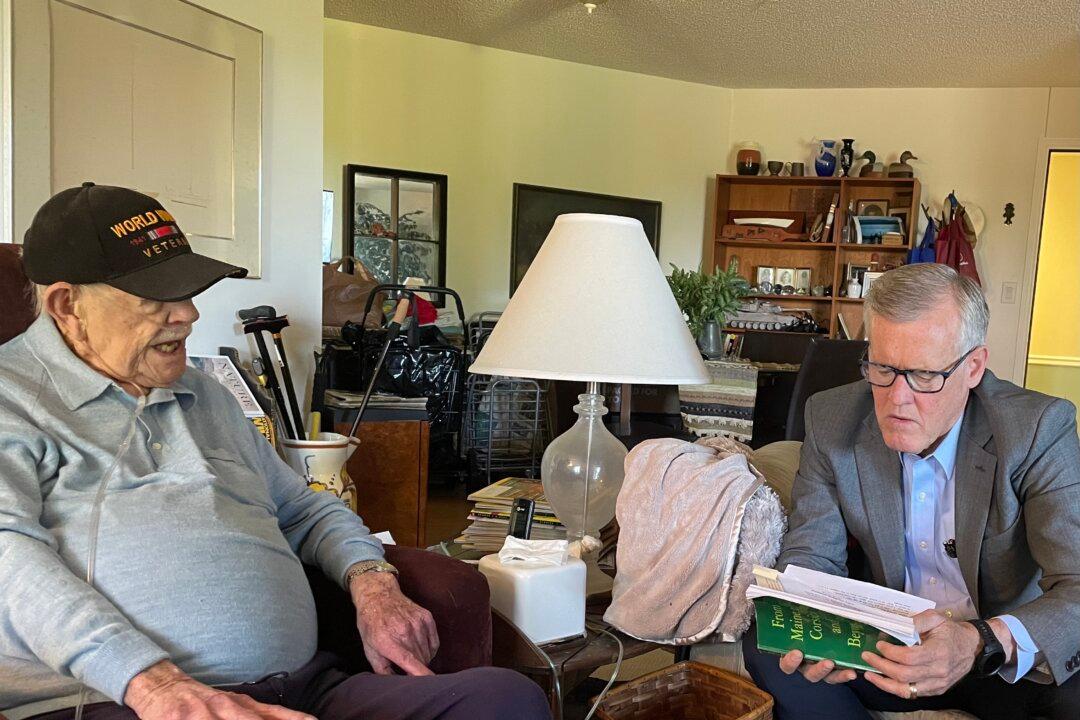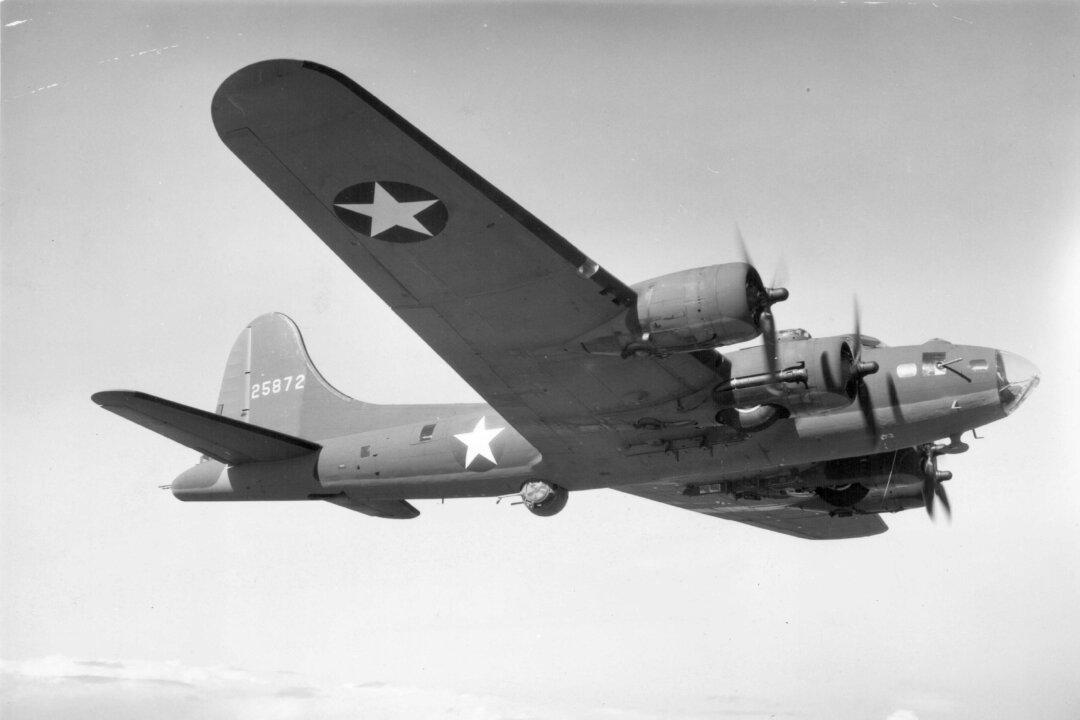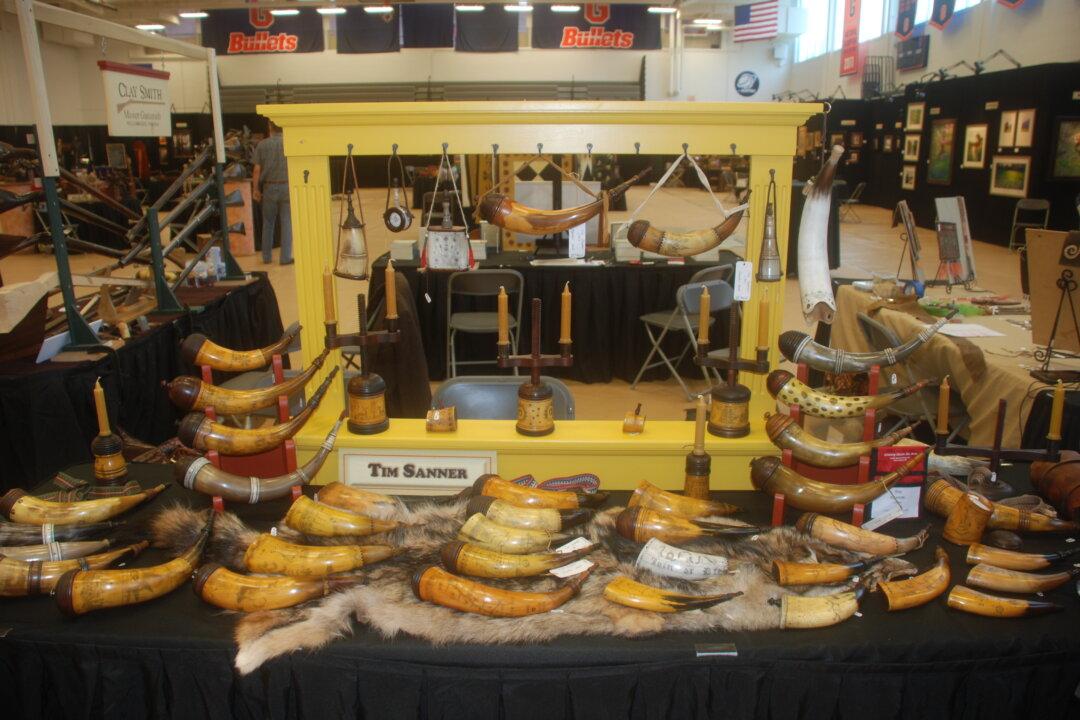He pulled a stiletto out of his pocket. The knife had a long, damascus steel blade with a pearl handle. There was no noise as the invited guest opened the blade and set the knife next to his place setting on the table. When steaks were served he picked it up in lieu of the host’s fine silver to cut his meat, holding the fork in his left hand. As the meal progressed he used his knife to cut cheese and slice an apple.
The blade remained on the table until dessert was over and coffee offered on a patio overlooking the Mediterranean Sea. The dinner guest then picked up his knife, wiped its blade with his linen napkin, pressed a lock button on the side and again, without noise, carefully folded the blade back into its handle and replaced it in his pocket.
This was clearly a valued possession. When the dinner party was over I asked the hosts about the man with the knife. “It is traditional. Many people bring their own cutlery when dining out. In fact some men are never without their knives.”
In the age of Homeland Security I never travel with a knife. Once my nail clipper was confiscated by a zealous searcher at the airport. I’ve seen expensive Swiss knives taken away, their owners forlornly trying to explain the great sentiment they attached to them. Knives would have to be placed in checked baggage, a risky way to transport a valuable possession.
In France, Italy and in many Mediterranean countries, carrying a knife is a life-long habit. The knife progressively becomes more valuable as the person ages until, depending on tradition and person’s circumstances, it becomes an heirloom. Some have inherited fine damascus knives or, more difficult today, purchase one from a master craftsman. The knife is forever and rarely is the owner parted from it.
It’s use, to make a cross on, then cut the daily bread, is traditional in the home. It is in a pocket for all manner of chores and indeed, in days gone by, necessary for defense walking lonely country roads at night. As such the fine blade has become a tool for the table as well.
I never thought to see the tradition in the U.S. The frenzy of laws and restraints, playground rules, and stupidity on the part of legislators has made carrying an umbrella illegal, or almost.
“What is a young boys favorite toy? This,” the child’s toy maker said. He pulled his penknife out of his pocket. “If he carried it to school today it would cause an uproar,” he added quickly, going back to his whittling, making traditional wooden toys for children.
That is the lament. Urbanization of America, legislation of mores and codification of behavior to the point where fear has replaced reality, especially when it comes to traditional ways of life.
I was fascinated by a display of damascus steel blades in a fine jewelry store. I took a catalog home and studied it. I never heard of William Henry, although the name sounded rather American Revolutionish in tone. The knives offered by these master craftsmen from McMinnville, Oregon, were of the temper and beauty of knives I'd seen in Europe.
Every knife was different, every blade required 18 months to create and every handle and appointment for the blade crafted of rarest wood, fossil bones and teeth, antique remnants of animals, meteorites and they were set with precious gem stones. I have my grandfather’s little Swiss Army knife. I use it several times a day. It sits on my computer keyboard at the highest point against the keys as does my fountain pen. There, that’s it really: if I use a fountain pen in these times, then it can be understood that I will appreciate William Henry craftsmanship. They also make pens.
I called the factory and was able to speak with its creator and owner, Matt Conable. His enthusiasm for the art of his trade was immediately evident. “It encompasses the soul of someone that works on it,” he told me.
Matt Conable explained that damascus steel is rarer than gold. He must wait months, sometimes years, for the right piece of damascus to be made and shipped to his workshop where the slab is finished into blades. “I have to wait 3 to 6 months for a piece of rare damascus steel. Then it goes to 6 shops to be finished into the final blade. Damascus and ‘Mokume Gane’ are based on the same technique of layering and forging disparate metals into a solid unified piece. Then we use creative techniques to pattern that unified piece to reveal itself. Mokume means ‘wood grain metal,’ in Japanese. It is the combination of copper and brass or copper and silver alloys. The tradition has been used to decorate Samurai swords. Since these are not ferrous metals, Mokume cannot be hardened. Damascus steel is used for the blade itself and Mokume for decoration,” Conable explained.
It requires 18 months for a William Henry knife to become a finished product. They have been presented to rock stars and royalty. The thumb opening and lock release buttons are set with jewels. One had diamonds, another opals, one garnets.
I couldn’t help but ask how he chose the name for his company. “We used my middle name and my then partner’s middle name,” Conable answered with good nature. William Henry does have a ring to it and fits the fine line of knives, pens and money clips they produce by hand.
Pricing? Well considering the knife is a lifelong possession that no doubt will be passed down from one generation to the next and cherished forever, $500 to $1200 is average. But then that is merely the price of a few tanks of gasoline these days. The damascus steel used in the blades is made by only handful of craftsmen in the whole world.
It is a knife I take to table. Sharp, precisely made, traditional, it is indeed finer by far than the best cutlery provided in the most exacting restaurants. I maintain the tradition of opening the blade with quiet grace. I place it beside the setting at my right hand. I use it during the meal then wipe it gently to leave only a trace of meat fat on the blade. I close it without the slightest noise or ostentation. All of that observed, learned early at a Mediterranean villa overlooking the sea.
For more information about William Henry visit their website at www.whstudio.com or call them toll-free at 1-888-563-4500.





